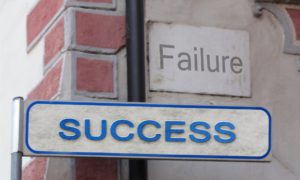We’ve all been there… yes, we’ve ALL been there. It’s hard to admit, and it hasn’t gotten easier to use the F word about my class(es), but we have all had moments of FAILURE.
When I started teaching, I wanted a lesson to be perfect. Who doesn’t? However, over time, I realized that my own reaction to the figurative wrenches is the key to overcome a failure, and the best way to practice what I preach to my own students. And while we’re at it, let’s stop calling it a failure. Failing sounds so finite; so over. I prefer to consider it a road-bump; a detour of sorts instead. After all, connotation makes all the difference, just as we teach the kids. Let’s not hate; we may dislike. Don’t be arrogant; be confident. So what if it’s not a failure, it’s an opportunity to change paths? Yes, it’s all psychological, but I have found that considering it as such has helped me gauge my reactions accordingly.
Don’t be afraid to be real with your students. Yes, there are those perfectionists out there, but most people genuinely appreciate someone who not only doesn’t know it all, but also doesn’t pretend to know it all and refuse to be wrong. Don’t misunderstand me: I expect my students to respect my authority and appropriately have those discussions, but I find talking out-loud, deleting, rewriting, thinking right along with my students; showing I don’t know everything from the start; really goes a long way in helping my students realize that I’m okay with not being perfect. After all, if I claim to be a life-long learner, doesn’t that alone say I always have progress to make? Seeing those imperfections happen don’t signal a stigma of huge failure, but they do encourage students to not be afraid of making those mistakes… those failures they will produce.
Admitting when something isn’t going right, considering what needs changed, even realizing there’s no tweaking that will work to save a lesson won’t be the end of the world. True, it’s not that I overanalyze this in front of my students, but I also firmly believe my high school students can handle me admitting that the link I had posted is dead and I can’t find that video they were supposed to watch, even though it was there a few days ago. That the questions I thought were brilliant for their group discussion are too long-winded and confusing for them to answer. And even sometimes it’s been my announcement that this activity did not go how I had planned and we’ll start fresh tomorrow. Doesn’t everybody need a fresh start? That’s modeling the attitude that I want my students to have.
Yes, I want my students to turn in their best work, but I also want students to know you’re rarely perfect on the first try. By allowing my students to see my reactions when I have… a challenge… and see that those reactions are along the lines of “back to the drawing board,” I can better encourage them to have the same reactions as they learn to improve their writing, their collaboration, and their work habits. It’s not only okay to be real; it’s imperative to model the classroom climate you want them to emanate. Don’t let the dichotomy of your own perceived perfection speak louder to your students that failure really isn’t an option in your class; after all, if we are really going to ask them to edit, improve, and polish, we have to show them what that looks like by our own—admittedly impromptu, sometimes—experiences, as well.
Jennifer Campbell is in her 15th year teaching 9th & 11th grades High School English, a Video Production class, and co-teaches Second Chance Reading in New London, Iowa. She loves technology and seeks to continually improve her teaching to meet the needs of her students for their futures as the next generation in the workforce. At home, Jennifer loves to spend time with her husband of nine years and their two dogs.


















